Yoga Practice For Chronic Pelvic Pain Can Be a Very Helpful Routine
As stated in my last blog post, yoga can be so beneficial as a pain management tool due to its ability to modulate the sympathetic nervous system3,4 which plays a large role in chronic pain. The exact mechanism of how yoga helps with chronic pain is still being studied, however, it is reasonable to believe the full body relaxation promoted by a yoga practice helps to decrease tension in key muscle groups- including the hips and pelvic floor which are often tight in people with chronic pelvic pain.
Currently, evidence has mostly focused on one hour long practices as an intervention, although there are some studies that report improvements in pain with shorter practices, such as the routine below. As with any mobility/stretching routine, benefits will be seen with more frequent practice, however even twice weekly can help decrease pain.
The below poses and postures are not medical advice and are not meant to substitute medical advice. These poses and postures may not be suitable for everyone. Please consult your medical provider prior to beginning exercise to make sure it is safe for you.
Poses in bold were found in all three studies in a systematic review and are the most studied poses regarding pelvic pain, so at minimum, try to perform these three if you are limited on time.
Side-lying diaphragmatic breathing – perform 5-10 slow breaths
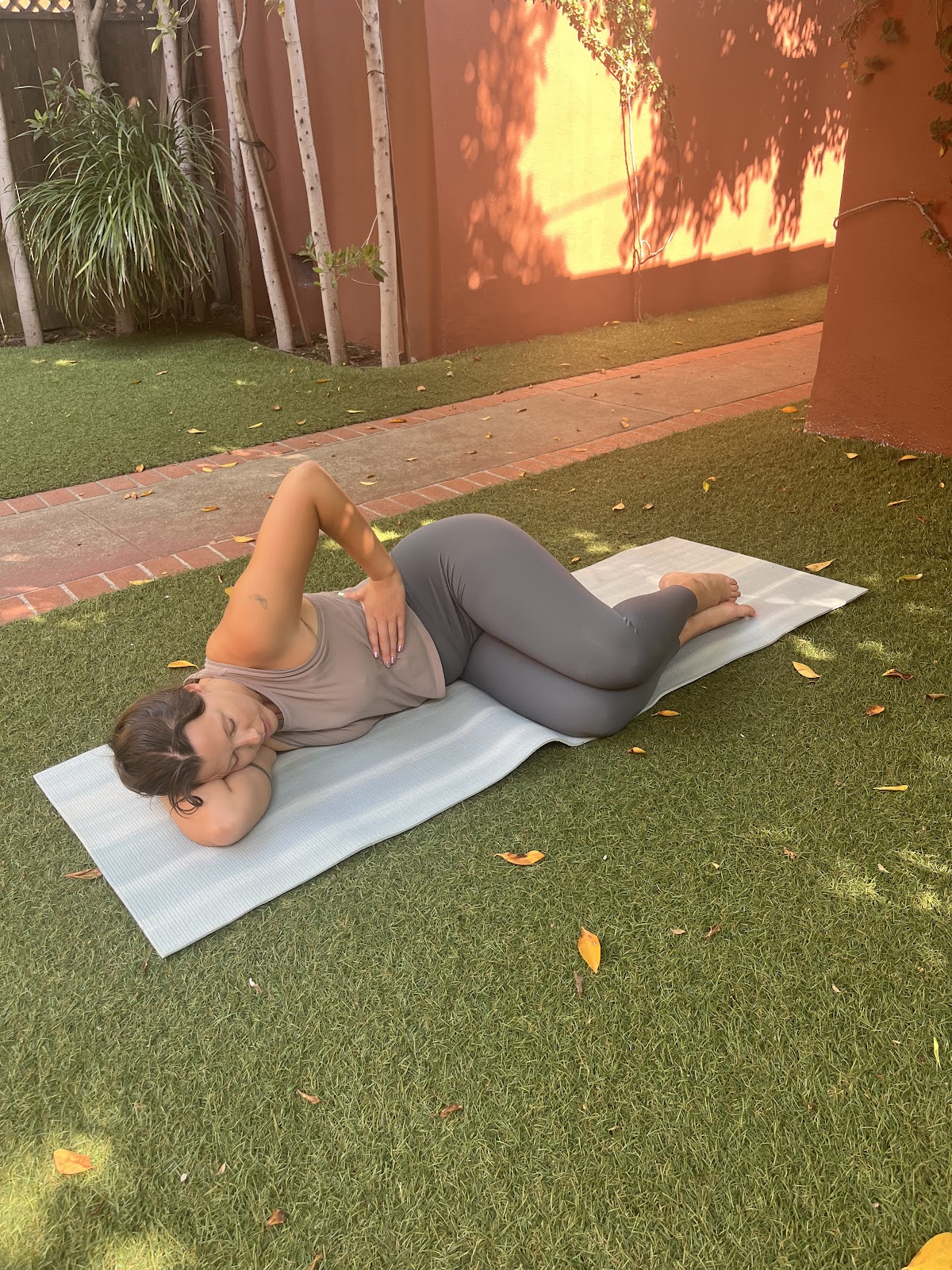
- Start by laying on your side with a hand on the ribcage. The hand placement will help your brain to connect with the diaphragm in order to take a true diaphragmatic breath
- When the diaphragm lengths on an inhale, so will the pelvic floor muscles, to make room for the diaphragm. This breathing technique is a great way to start stretching the pelvic floor, which can aid in relief of pelvic pain
Cobra x 10
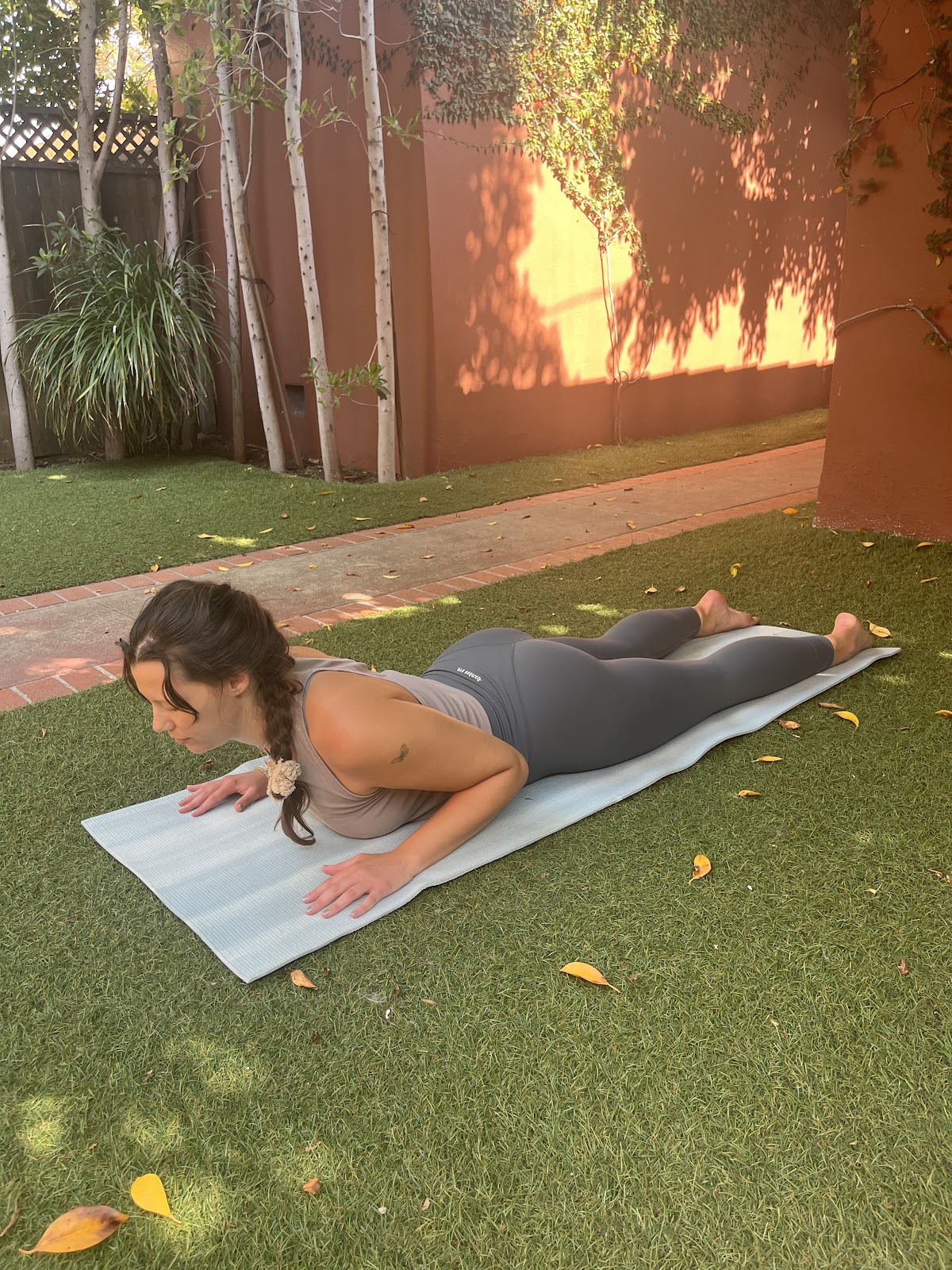
- Start lying facedown on the mat
- When you inhale, lift up the chest keeping light pressure in the hands underneath the shoulders
- Exhale and lower back down to the mat
- Flow between these two shapes, coordinating the breath with each movement
- This post is great to help with lumbar spine mobility, and stretching of the lower abdomen. Tightness in the abdominal muscles and fascia can create strain on the pelvic floor as well, so this is a great gentle option to start opening up these areas without working directly on the pelvic floor muscles.
Full Expression of Cobra- optional
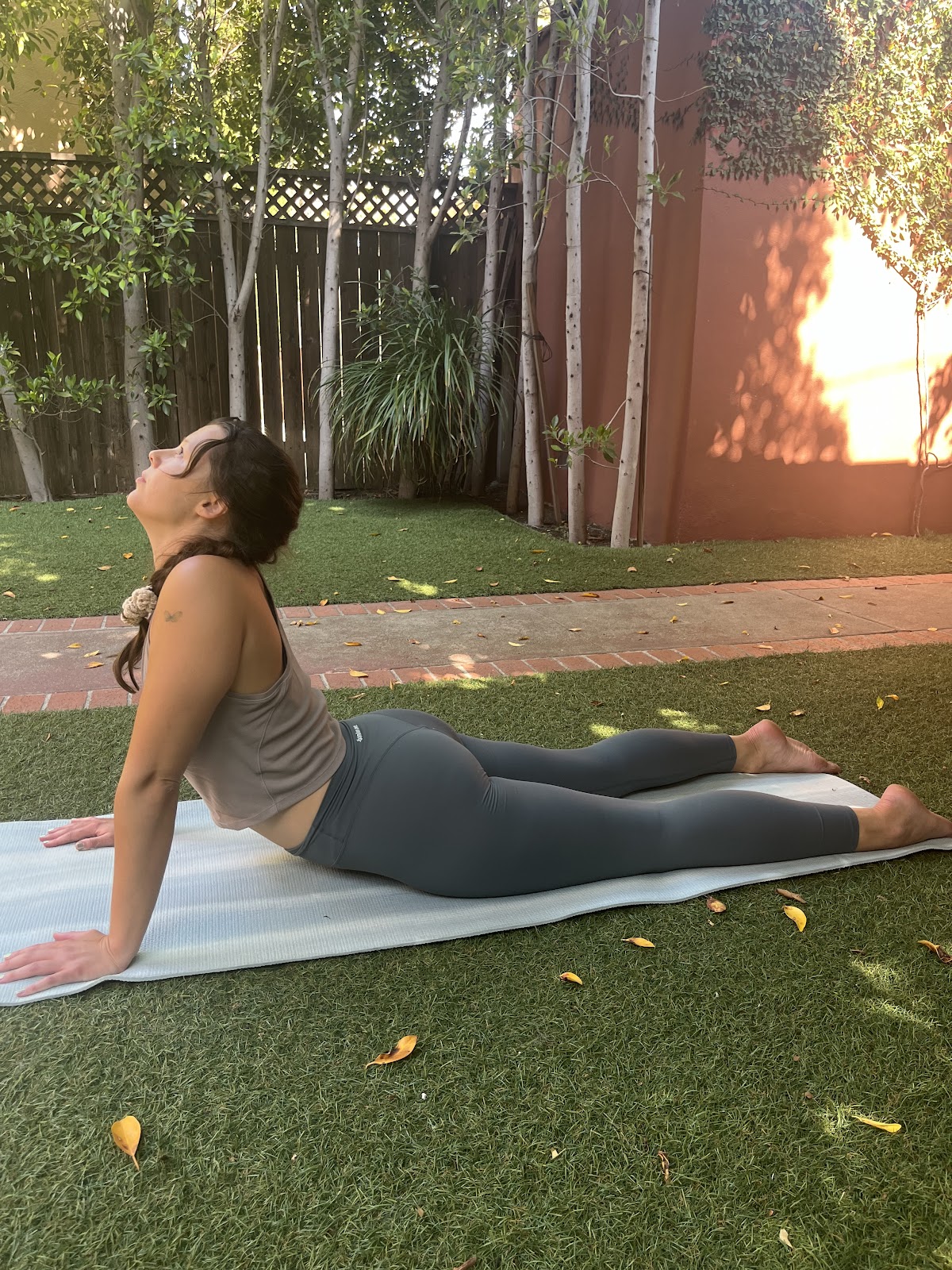
- If the prior pose is feeling good in your body, you can press up into a deeper stretch for the abdomen.
- Hold this deeper position for at least 5 slow deep breaths
- Gazing up will stretch the fascia and muscles of the throat, which also share connections to the pelvic floor, and is another great indirect way to work on opening the pelvic floor muscles
Cat/Cow- perform 5-10 slow breaths
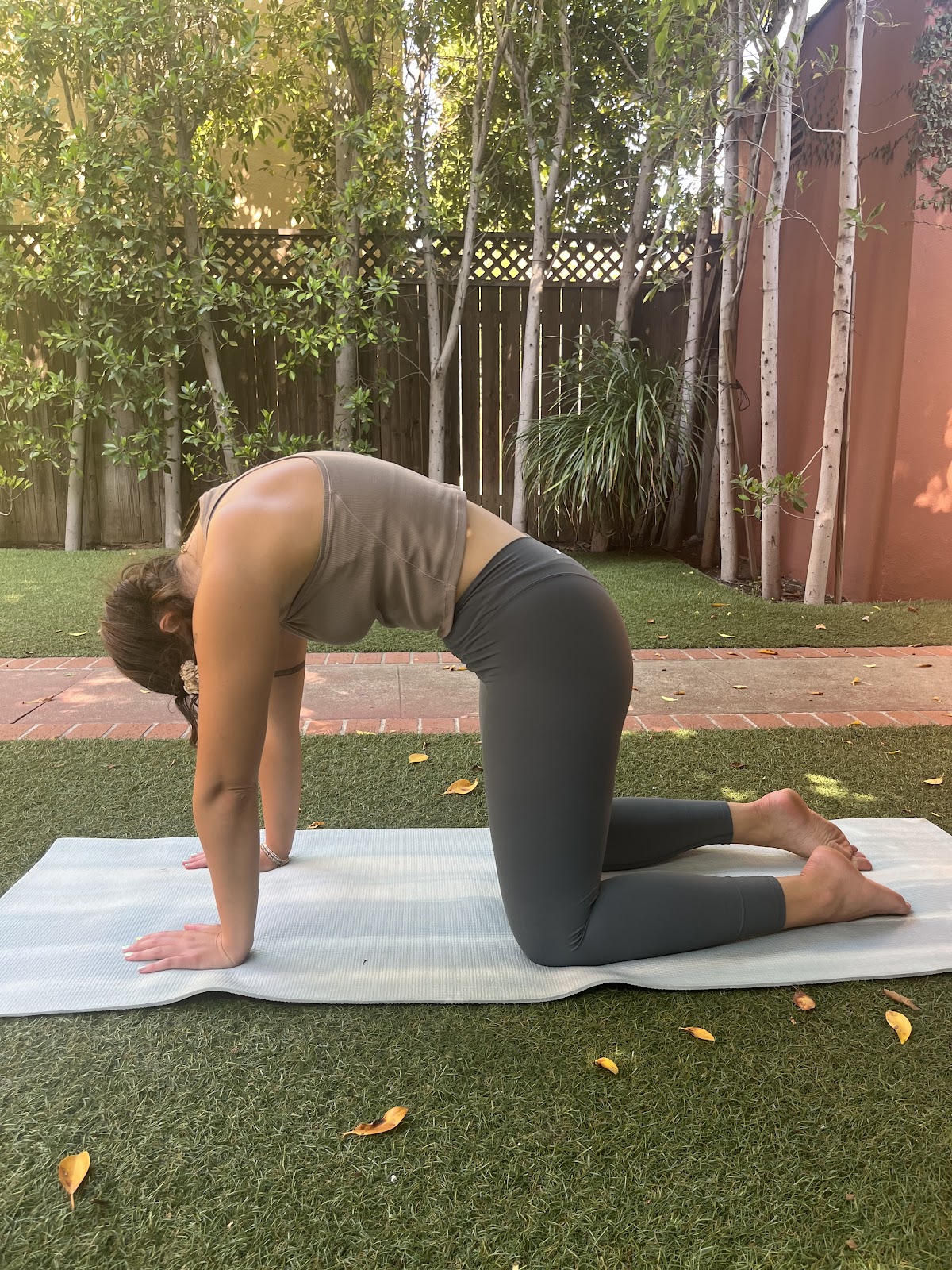
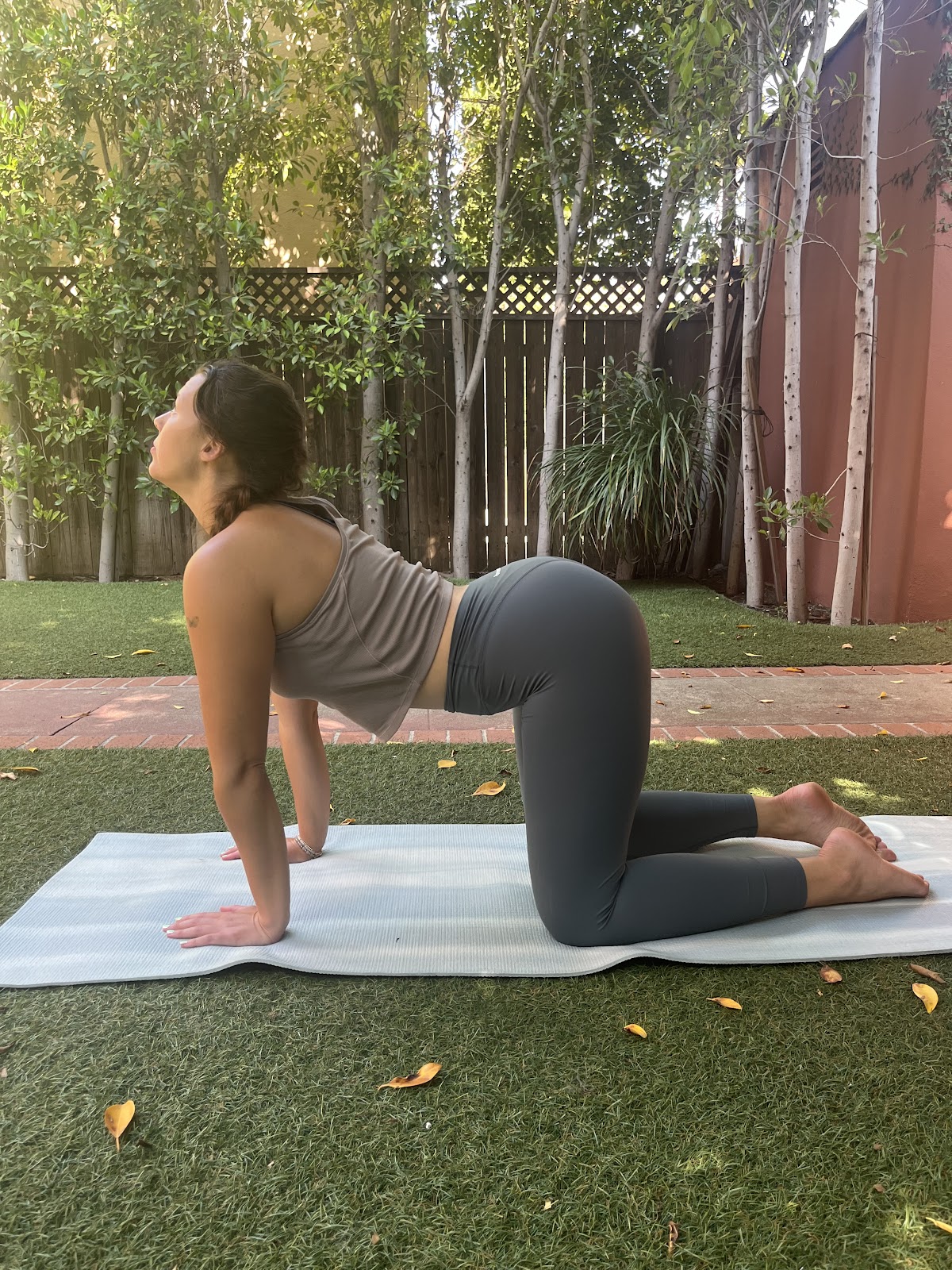
- As you inhale, point your tailbone up to the ceiling as you pull your chest forward, shoulders pulling back, and gazing up at the ceiling. This post stretches the abdomen and the neck similar to the prior pose and can be relieving to hold in this position for a few breaths
- As you exhale, reverse the curve of your spine, pulling your abdominal muscles in to help create a “C” curve in the spine, point the tailbone towards the floor and chin to chest
- Cycle using breath to movement between these two shapes
Low lunge pose- hold for at least 30 seconds on each side (approximately 5 slow breaths)
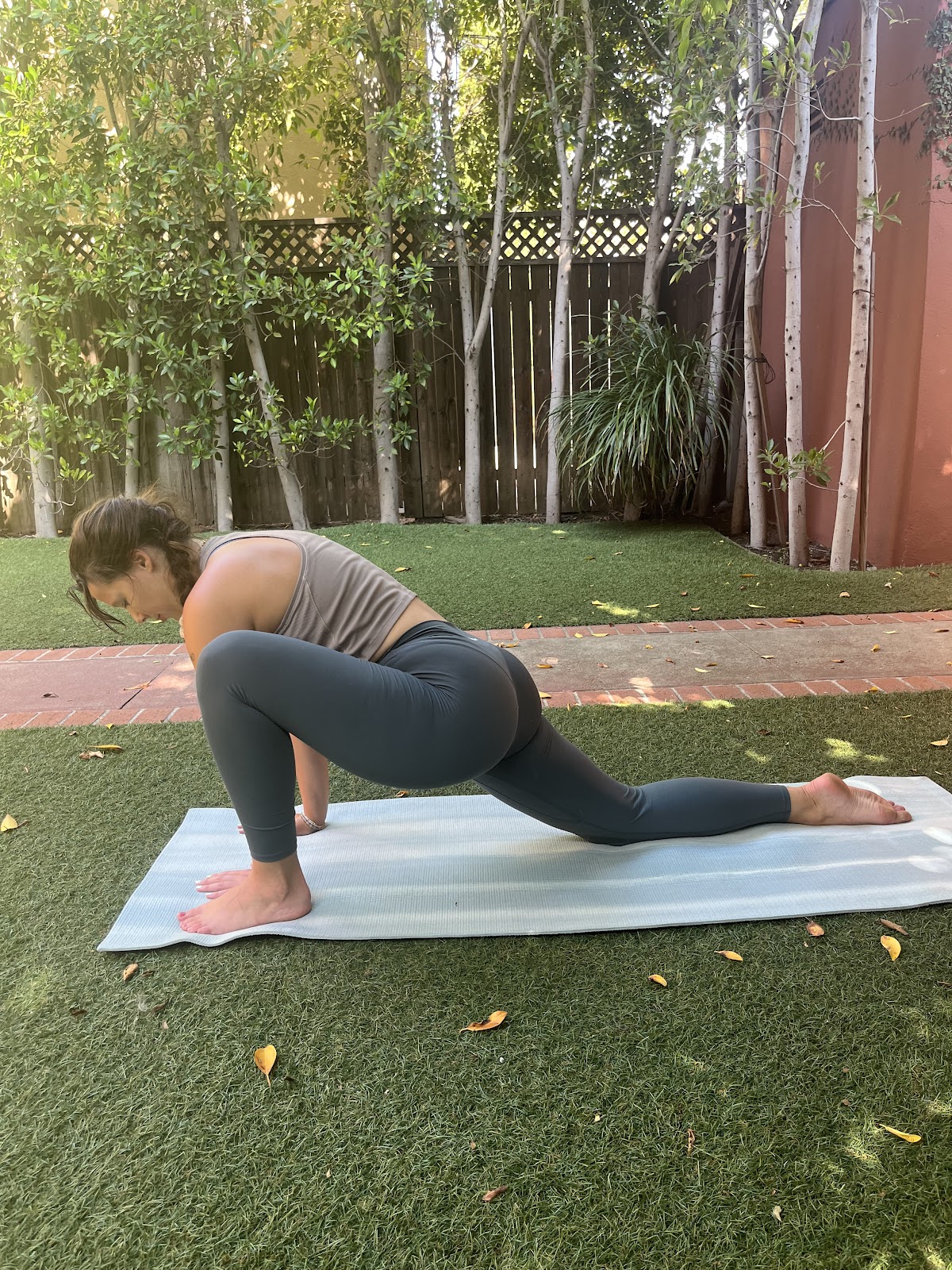
- This position can be entered from all fours, or a downward facing dog pose
- Step one foot at the top of the mat, and place both hands inside the front leg
- This is a deep stretch for the hip flexors on the extending leg, inner thigh, deep hip rotators, pelvic floor, and lower abdomen.
- Tip: if you are feeling pinching in the front hip, try rotating the knee out towards the side, and letting the foot roll towards the pinky edge
Legs up the wall – hold for 2 minutes

- This is where longer holds will begin for the rest of the practice, and where the body will enter into a parasympathetic state, or “rest and digest”, which is helpful for decreasing pain sensations, even when your mind may start to become restless here, try to stay in each posture for at least two minutes
- Find an open space on a wall, scoot your hips as close to the wall as possible, entering with one side of the hip contacting the wall, then roll onto your back and swing the legs up the wall
- This pose also aids with fluid return to the heart from the lower body, supporting the veins of the legs
Bound angle pose- hold for 2 minutes
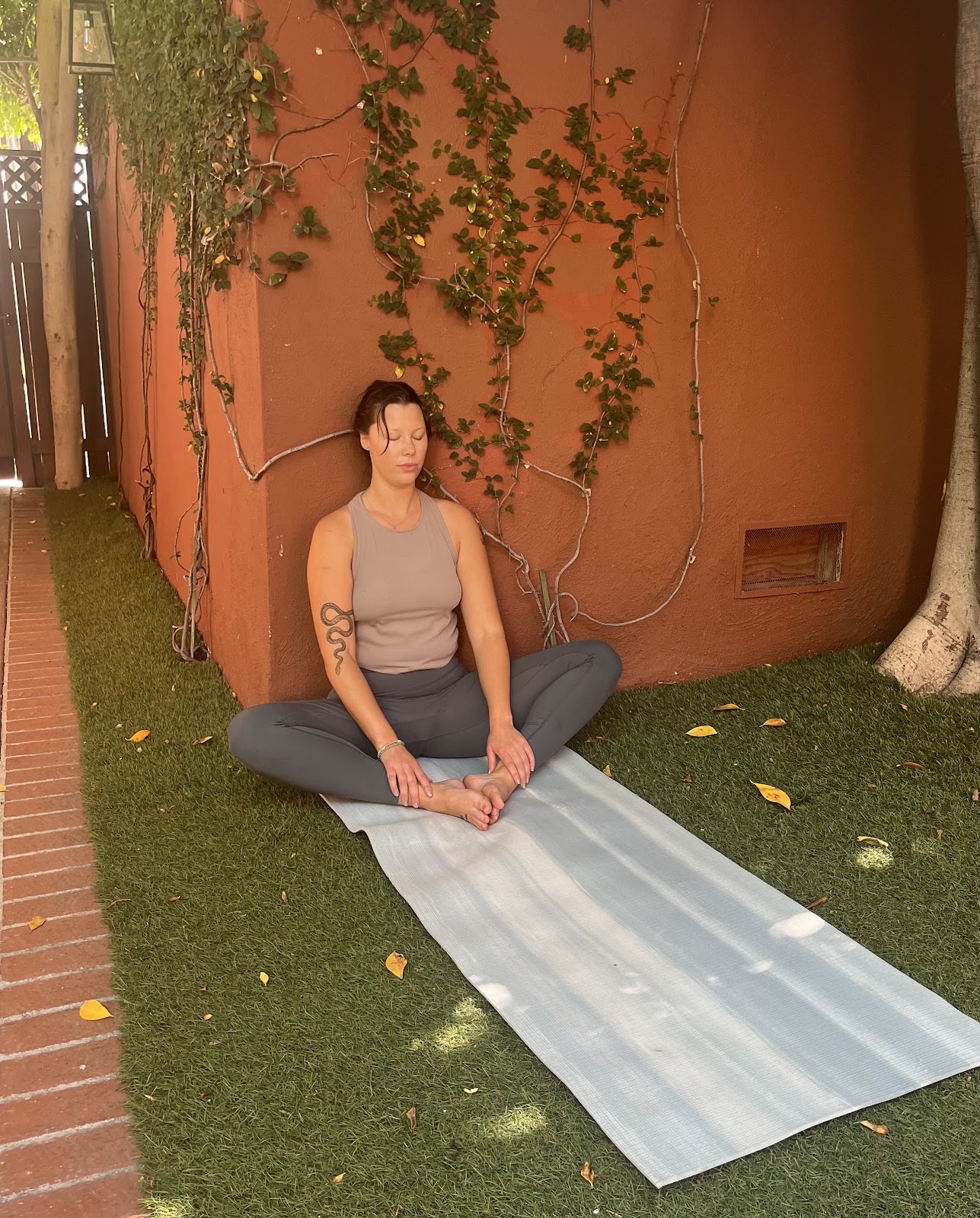
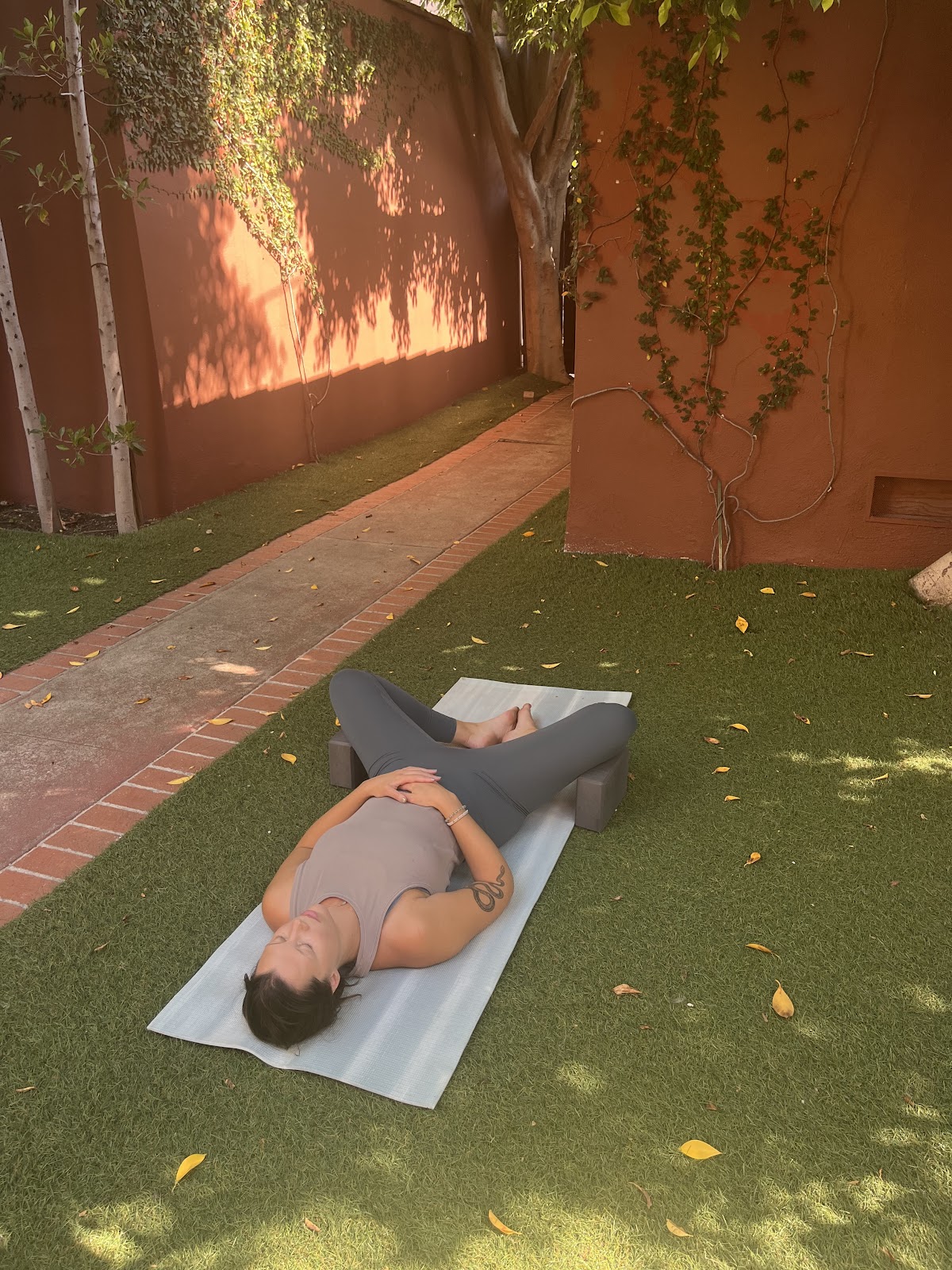

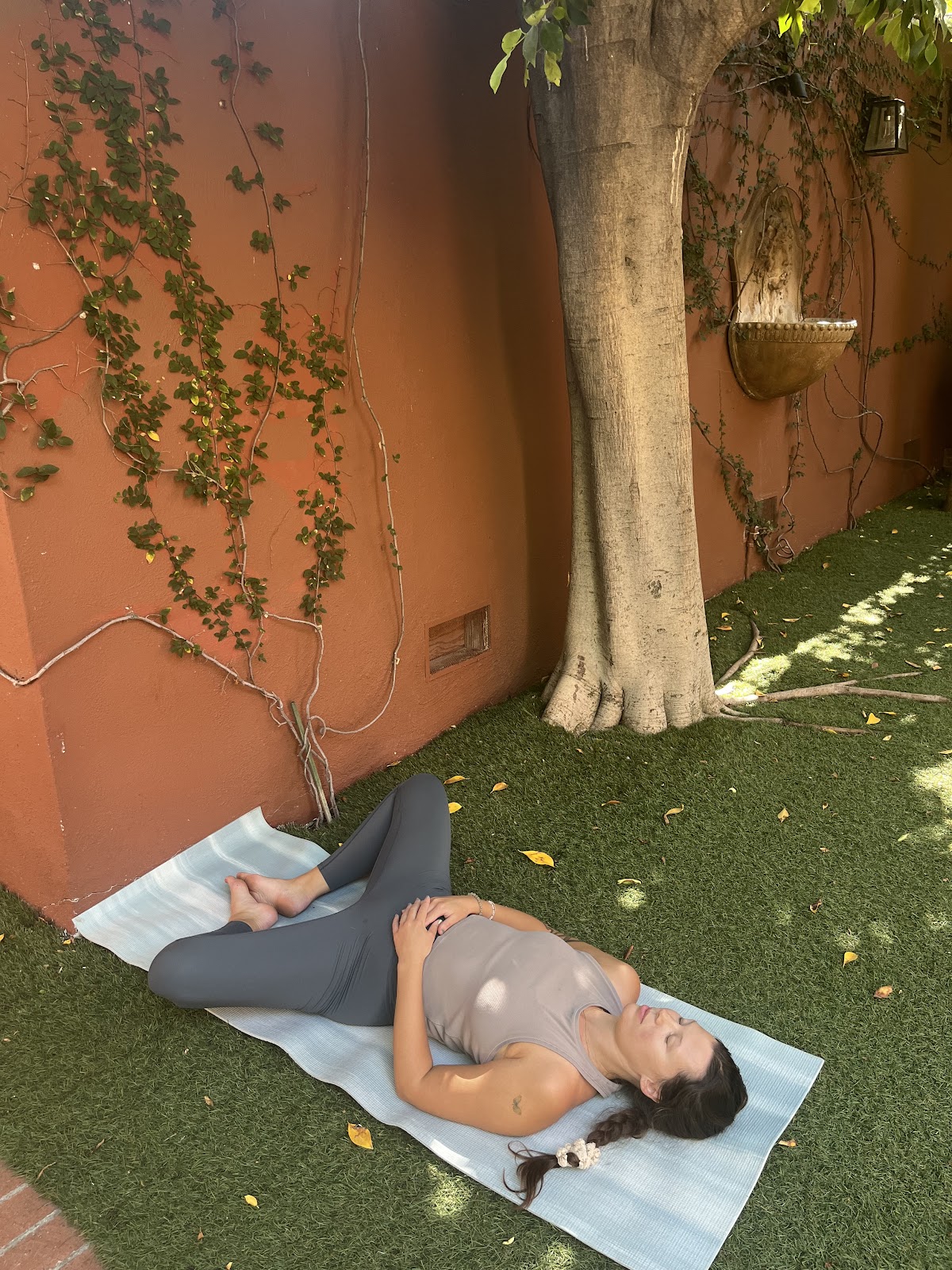
- Traditional bound angle pose is the picture seated upright, however there are benefits to all of the variations shown
- In all variations, there is a deep stretch to the inner thigh muscles, which share attachments to the pelvic floor muscles
- Blocks underneath the knees can be a nice option if you feel guarding in the hips, bringing support will help the nervous system to allow full muscle relaxation- which is the goal for pelvic pain that is a either a product of tight hip muscles or cause of tight hips muscles
Fish Pose – hold for 2 minutes
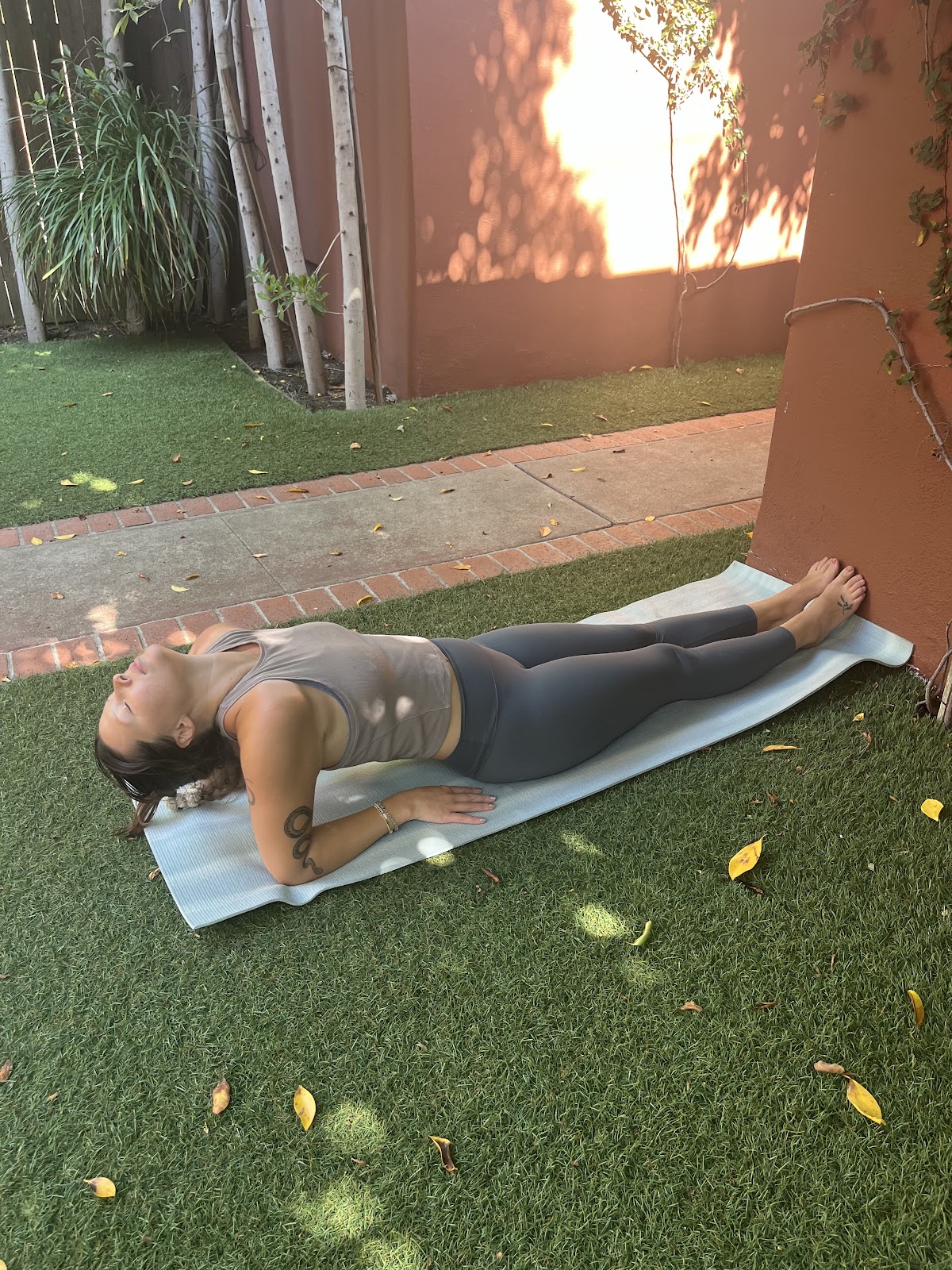
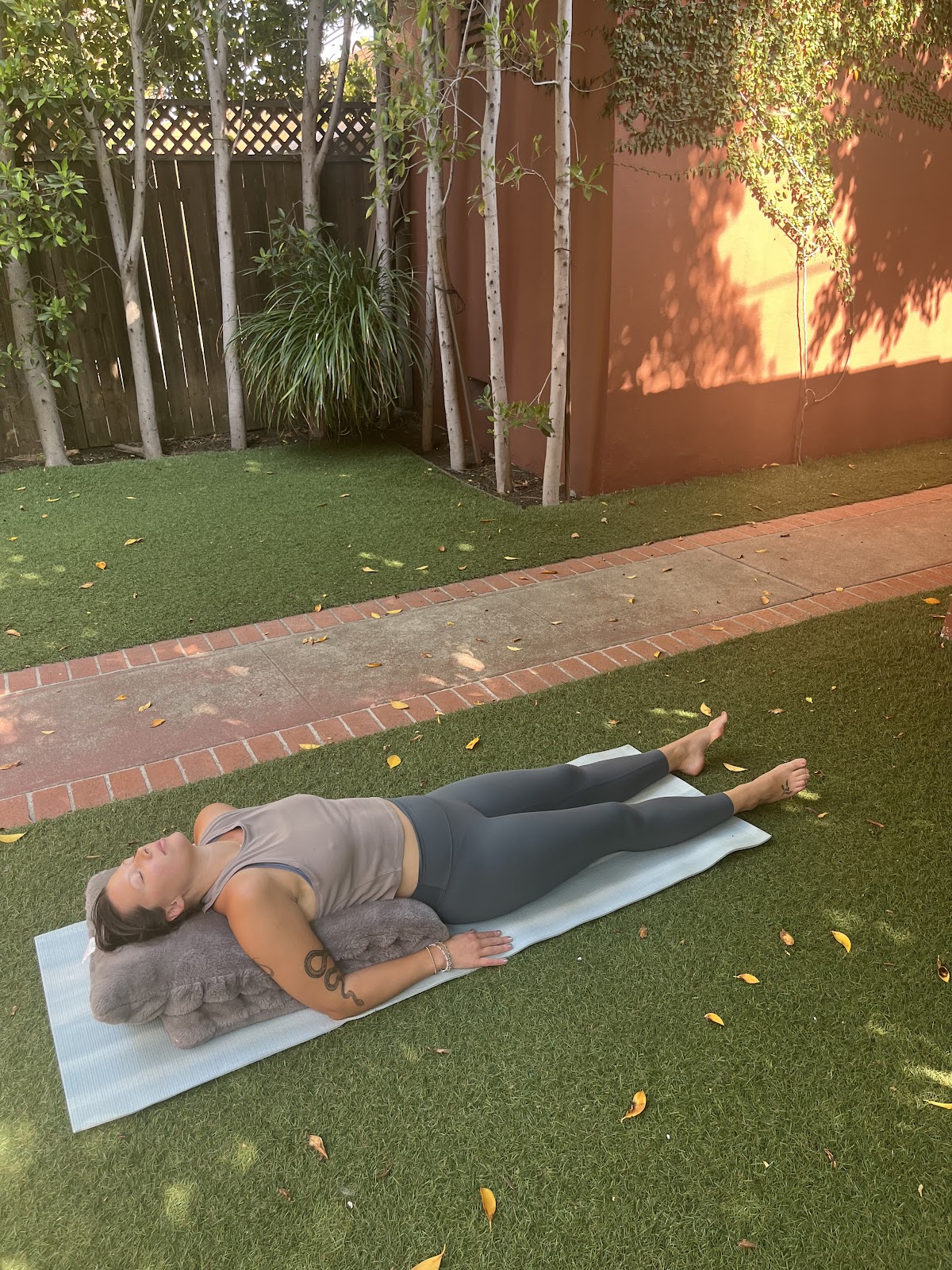
- Laying either on the mat, or on a bolster or couple of pillows for more support, prop onto the elbow and let your head relax towards the ground
- This is a deep stretch for the throat and abdomen, similar to cobra this will help stretch the pelvic floor from the fascial connections between these areas
- If there is discomfort in the neck that is causing your body to tense up, try the supported version, and if still there is discomfort, skip this pose
Supported Child’s Pose- hold for two minutes
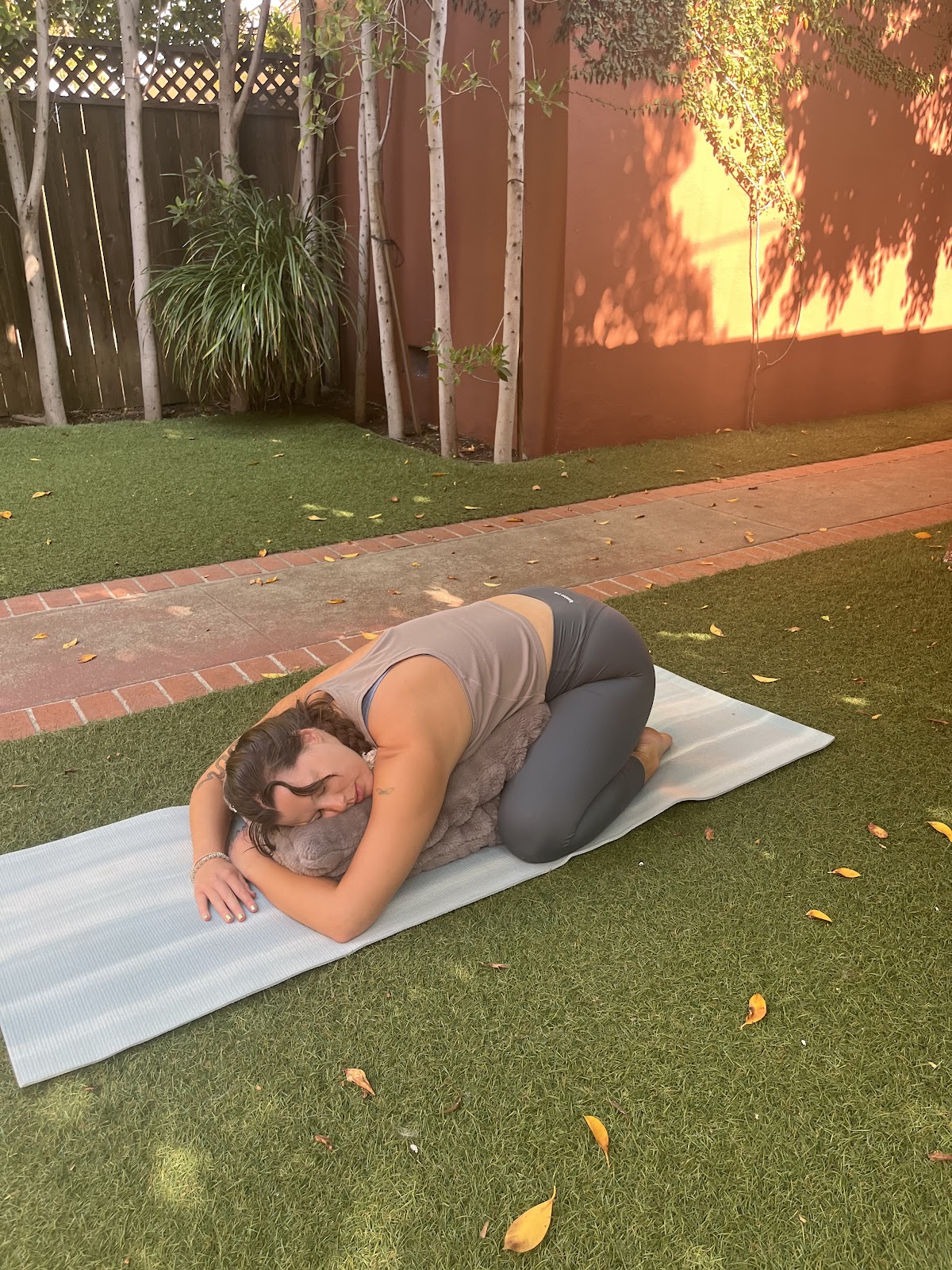
- My absolute favorite! Start by bringing your knees around the sides of several pillows or a bolster from an all fours position
- Sink your hips back reaching towards your heels, and turn your head to one side
- Chest and abdomen should be fully resting on support, so add pillows until there is not space there
- This stretches the lower back, glutes, and pelvic floor. I particularly like this stretch for the pelvic floor, because as your take your diaphragmatic breaths, there will not be as much room for the abdomen to expand, so the pelvic floor will have to stretch more to make room for the diaphragm; similar to how we started but even more since the abdomen is blocked by pillows/and or bolster
Spinal Twist 1 minute each side (approx 5-10 slow breaths)
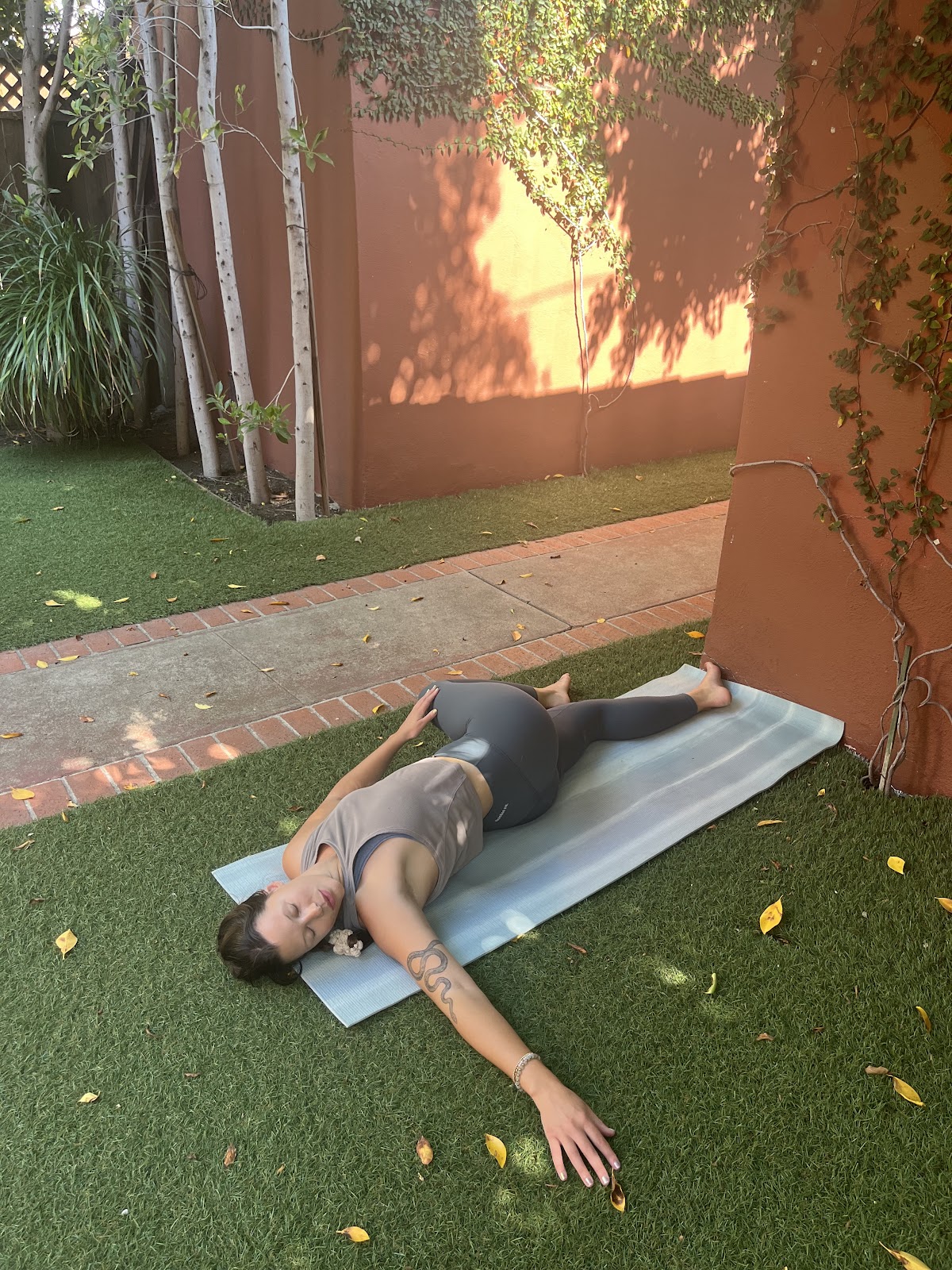
- Starting on your back, bring one knee in towards your chest, then across the body
- Keep both shoulders connected to the ground, if this is not possible, bring a pillow or bolster under your knee to decrease the twist
- This stretches the lower back, glute, fascia connecting to your IT band, and chest. Stretching the chest is helpful to alleviate poor posture that can also contribute to pelvic floor pain and dysfunction
Savasana- 2 minutes (can be longer if you have time)
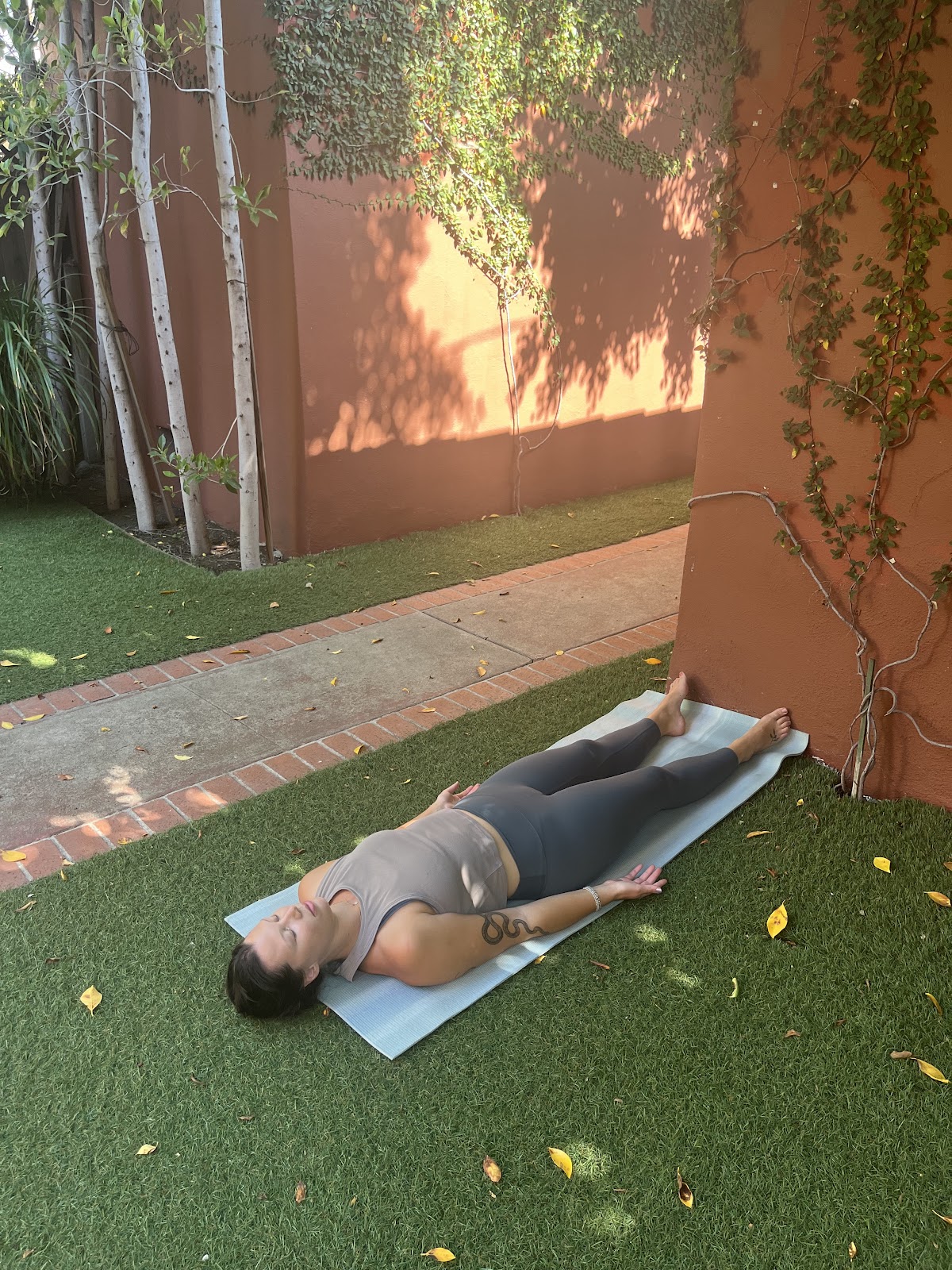
- This may be the hardest pose yet for some of you- and maybe the one you need the most if that’s you
- Lie on your back, if lying flat is uncomfortable and creating more muscle tension, place pillows or blocks under the knees, or bend the knees and place the feet flat on the ground, letting the knees knock together
- Come back to your natural breathing pattern, allowing this to be totally passive. Try to stay present by noticing the sensations of the body feeling connected to the ground, and imaging your bones getting heavy into the ground.
This sequence can be performed any time of day, and can be shortened depending on how much time you have. As I tell all my patients an past yoga students, a yoga practice in on person’s body should not look the same as another person, so modifications are encouraged. The more supported your body feels here, the more benefits you will get to release muscle tension and improve your pelvic pain. If you would like to be assessed by one of our physical therapists, we will be able to recommend a personalized yoga routine, and pain management techniques if you are experiencing pelvic pain for any reason.
Reach out to our team to get our recommendations on yoga practice for chronic pelvic pain.
Resources
- Gonçalves AV, Barros NF, Bahamondes L. The Practice of Hatha Yoga for the Treatment of Pain Associated with Endometriosis. J Altern Complement Med. 2017;23(1):45-52. doi:10.1089/acm.2015.0343
- Gonçalves AV, Makuch MY, Setubal MS, Barros NF, Bahamondes L. A Qualitative Study on the Practice of Yoga for Women with Pain-Associated Endometriosis. J Altern Complement Med. 2016;22(12):977-982. doi:10.1089/acm.2016.0021
- Rakhshaee Z. Effect of three yoga poses (cobra, cat and fish poses) in women with primary dysmenorrhea: a randomized clinical trial. J Pediatr Adolesc Gynecol. 2011;24(4):192-196. doi:10.1016/j.jpag.2011.01.059
- Russell, N., Daniels, B., Smoot, B., & Allen, D. D. (2019). Effects of yoga on quality of life and pain in women with chronic pelvic pain: systematic review and meta-analysis. The Journal of Women’s & Pelvic Health Physical Therapy, 43(3), 144-154.
- Saxena R, Gupta M, Shankar N, Jain S, Saxena A. Effects of yogic intervention on pain scores and quality of life in females with chronic pelvic pain. Int J Yoga. 2017;10(1):9-15. doi:10.4103/0973-6131.186155
